
Ambrosius Bosschaert the Elder was a Flemish-born Dutch still life painter and art dealer. He is recognised as one of the earliest painters who created floral still lifes as an independent genre. He founded a dynasty of painters who continued his style of floral and fruit painting and turned Middelburg into the leading centre for flower painting in the Dutch Republic.

Jan Baptist Weenix, also spelled Jan Baptiste Weeninx (1621–c. 1659), was a painter of the Dutch Golden Age. Despite his relatively brief career, he was a very productive and versatile painter. His favourite subjects were Italian landscapes with large figures among ruins, seaside views, and, later in life, large still life pictures of dead game or dogs. He was mainly responsible for introducing the Italian harbour scene into Dutch art, in mid-size paintings with a group of figures in the foreground.

Abraham Bloemaert was a Dutch painter and printmaker who used etching and engraving. He initially worked in the style of the "Haarlem Mannerists", but by the beginning of the 17th-century altered his style in line with the new Baroque style that was then developing. He mostly painted history subjects and some landscapes. He was an important teacher, who trained most of the Utrecht Caravaggisti.

Abraham van Diepenbeeck was Dutch painter, draftsman, glass painter, print maker and tapestry designer who worked most of his active career in Antwerp. He designed glass windows for various churches and monasteries in Antwerp for which he made many design drawings and oil sketches. He engraved and designed many prints which were published by prominent Antwerp printers such as van Meurs, the Plantin Press and Martinus van den Enden the Elder. He had a close relationship with the workshop of the leading Flemish Baroque painter Peter Paul Rubens and collaborated on various projects under the direction of Rubens. In the 1630's van Diepenbeeck started to create monumental paintings. His work was influenced by Rubens and Anthony van Dyck.
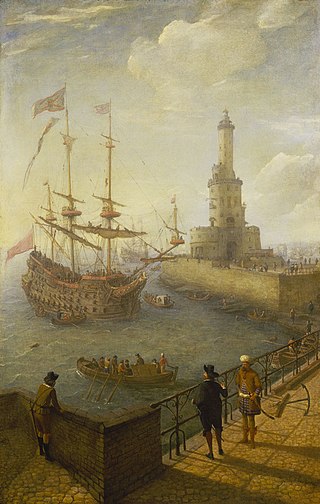
Abraham Willaerts was a Dutch Baroque painter, mostly of marine and harbor scenes. He also painted a number of single and family portraits.

Abraham Storck was a Dutch painter, who enjoyed a reputation for his marine paintings, topographical views and Italianate harbour scenes. Storck was also an outstanding draughtsman.

St. Eloy's Hospice is a guildhall in Utrecht in the Netherlands.

The Bentvueghels were a society of mostly Dutch and Flemish artists active in Rome from about 1620 to 1720. They are also known as the Schildersbent.

The Guild of Romanists or Confrérie van romanisten was a society which was active in Antwerp from the late 16th to the late 18th century. Its membership was made up of notables and artists from Antwerp who had visited Rome. It offered artists access to the networks of Antwerp's urban elites.
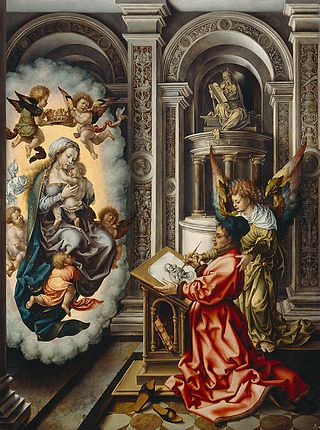
The Guild of Saint Luke was the most common name for a city guild for painters and other artists in early modern Europe, especially in the Low Countries. They were named in honor of the Evangelist Luke, the patron saint of artists, who was identified by John of Damascus as having painted the Virgin's portrait.
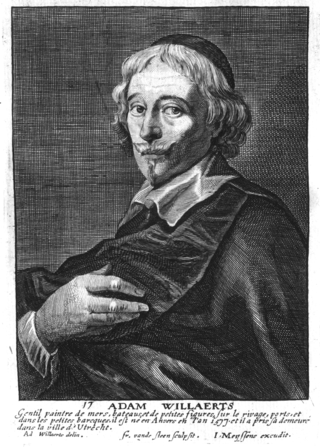
Adam Willaerts was a Dutch Golden Age painter.

Paulus Moreelse was a Dutch painter, mainly of portraits.

Lancelot Blondeel, also Lanceloot, was a Flemish painter, designer of sculptures, tapestries and jewelry, architect, city planner, surveyor and cartographer who was active in Bruges.
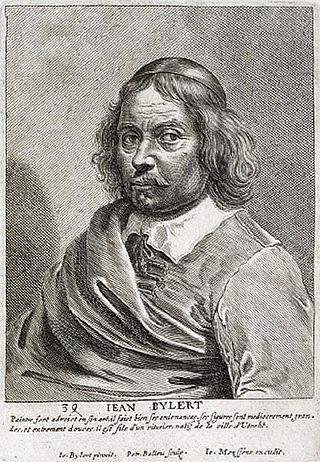
Jan Hermansz van Bijlert was a Dutch Golden Age painter from Utrecht, one of the Utrecht Caravaggisti whose style was influenced by Caravaggio. He spent some four years in Italy and was one of the founders of the Bentvueghels circle of northern painters in Rome.

Nikolaus Knüpfer was a Dutch Golden Age painter.

The Haarlem Guild of Saint Luke was first a Christian, and later a city Guild for various trades falling under the patron saints Luke the Evangelist and Saint Eligius.
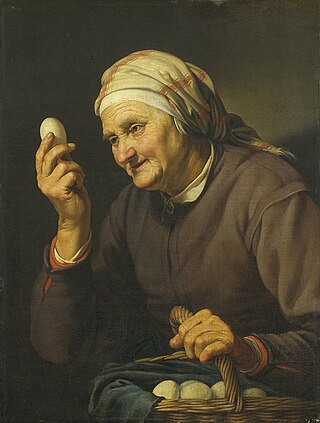
Hendrick Bloemaert was a Dutch Golden Age painter.

The Leiden Guild of Saint Luke refers to three artist collectives in Leiden; the Leidsche St. Lucas Gilde dating from 1648, the newer Leidse Tekenacademie established in 1694, and the collective known as Ars Aemula Naturae established in 1799.
Willem Ormea (1611–1673) was a Dutch Golden Age painter known for his still lifes of subjects such as fish.

Isaac Willaerts was a Dutch painter who specialized in coastal landscapes and maritime scenes.




















